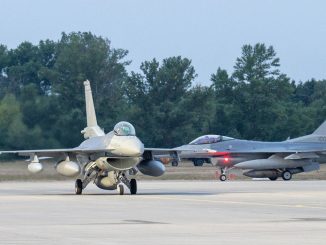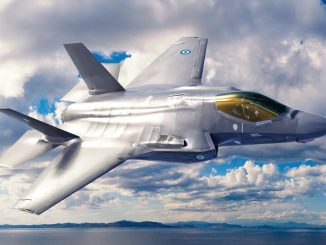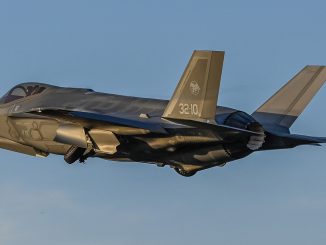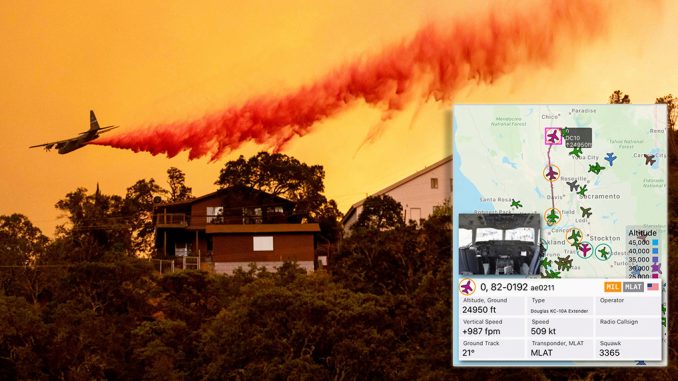
Travis Aircraft Seen Streaming Out of North California Base on Flight Tracking Apps.
The U.S. Air Force ordered a mandatory evacuation of northern California’s Travis AFB late Wednesday night as wildfires in the region continue to spread ahead of firefighting efforts.
As word of the mandatory evacuation order for northern California’s Travis AFB reached the media late on August 19, 2020, streams of the base’s aircraft could be seen on the flight tracking website ADSBExchange leaving the base and flying north to various locations. The aircraft included KC-10 Extender tankers and C-17 Globemaster III airlift aircraft and two C-5M Galaxy heavy lift aircraft. Within an hour at least ten aircraft were visible on the flight tracking software leaving the base.
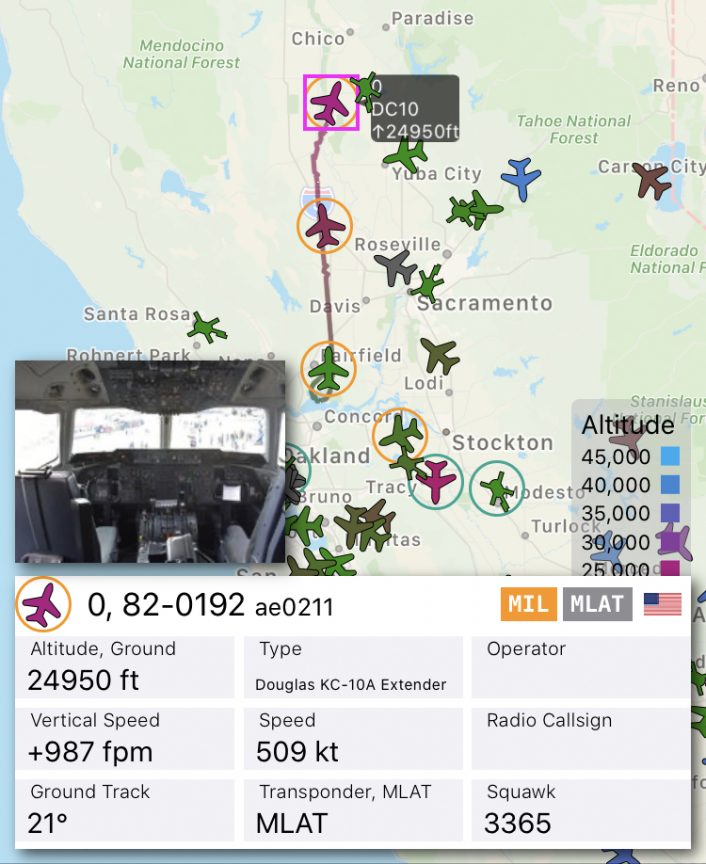
According to reports, the base’s KC-10 Extenders were flying to Fairchild AFB, Washington, the C-17 Globemaster IIIs were evacuating to Joint Base Lewis-McChord, Washington and the giant C-5M Galaxy aircraft were flying to Kelly Field at Joint Base San Antonio-Lackland, Texas.
An official media release from Travis AFB Public Affairs said, “In response to the LNU Lightning Complex Fire near Fairfield and Vacaville, California, the Travis Air Force Base installation commander has ordered evacuations for non-mission essential personnel in accordance with the Solano County fire department’s mandatory evacuations, Aug. 19, 2020.”
Anyway, all the assets of the Air Mobility Command regularly train to perform quick evacuation so as to prepared when severe weather, adversary actions, or any other extreme natural disasters, require the aircraft to be relocated: for instance, a couple of months ago we reported about the evacuation exercise at Altus Air Force Base, Oklahoma, that involved two dozen KC-135s, KC-46s and C-17s on May 21, 2020.
The wildfires are the result of approximately 10,849 lightning strikes that have ignited 367 new fires in California over the past 72 hours, according to Cal Fire spokesperson Jeremy Rahn during a news conference on Wednesday. According to a statement issued by the Fairfield, California Police Department, “Unmanned aerial vehicles are monitoring the fire north of town through video.”
Video surfaced on social media before sundown on Wednesday showing C-17s at Travis in front of an opaque sky of grey smoke.
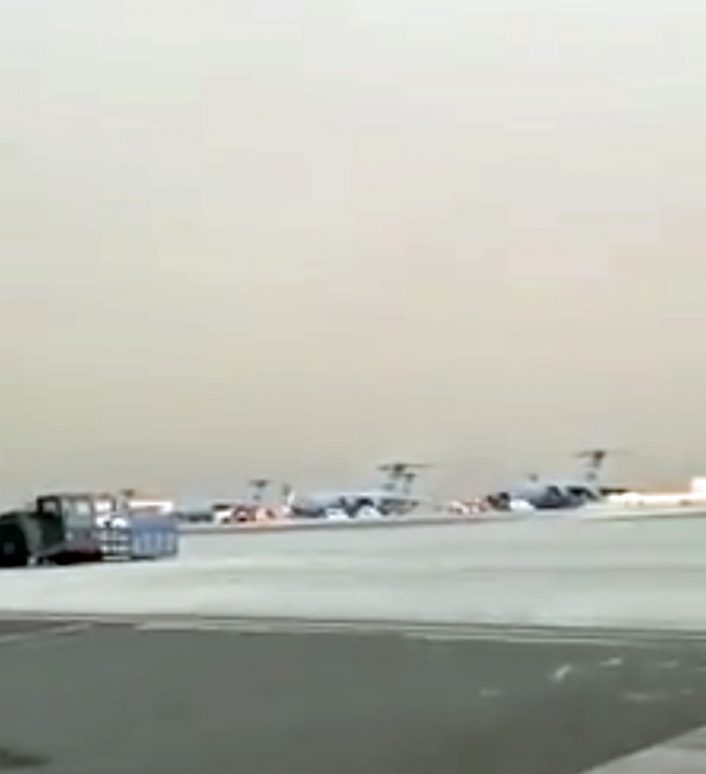
Eighty miles north of Travis AFB in northern California, Beale AFB, home to the famous 9th Reconnaissance Wing who operate the U-2 high altitude surveillance aircraft, has not issued an evacuation order. In an incident unrelated to the current wild fire, three people were injured in July fighting a 400-acre grass fire at Beale AFB.
Four C-130 MAFFS-equipped aircraft are assisting @NIFC_Fire. Aircraft #3, 4 & 8, made 12 retardant drops Tue. Our AFNORTH 302 Air Expeditionary Group is managing the requests for these @AirNatlGuard & @USAFReserve C-130s. >100 retardant drops since Jul by 146, 152, 153 & 302 AWs pic.twitter.com/K0BS0WtbgY
— 1st AF/America’s AOC (@1stAF) August 19, 2020
Journalist Brian Everstine of Air Force Magazine reported on Wednesday, August 19, that, “Specially equipped C-130s are supporting fire responses across California, where numerous blazes have destroyed dozens of homes and prompted evacuations throughout the state.”
Everstine went on to report that, “Four C-130s from the California Air National Guard’s 146th, the Wyoming Air National Guard’s 153rd, and Nevada Air National Guard’s 152nd Airlift Wings are activated and flying sorties, dropping fire retardant with the aircraft’s Modular Airborne Firefighting System. The four aircraft conducted 15 sorties on Aug. 18, conducting 12 drops on the Lake Fire north of Santa Clarita, the Salt Fire near Stockton, and the LNU Lightning Complex Fire west of Sacramento, according to 1st Air Force-Air Forces Northern.”
Photos of the C-130s conducting the dangerous, low-altitude fire suppression mission showed the planes flying through dense smoke to deliver their payloads of fire retardant on the flames.
One aircrew member died on Wednesday, August 19, when a UH-1 firefighting helicopter crashed in Fresno County killing the lone pilot and starting another brush fire that joined others burning in the region. According to local reports, the UH-1 “Huey” was on a water bombing mission when it went down nine miles south of Coalinga, California at approximately 10 a.m. local time. The aircraft belonged to a private contracting agency working for the state of California at the time of the accident.

